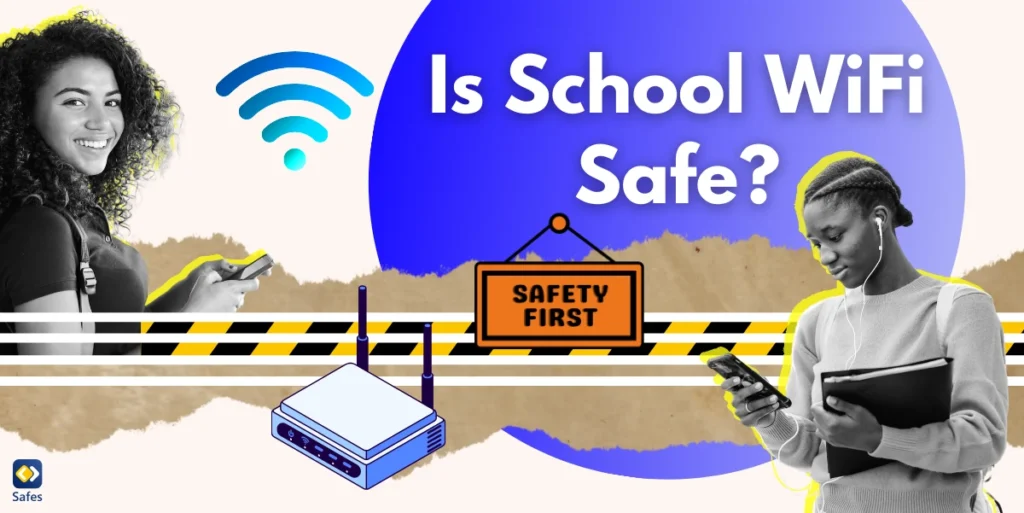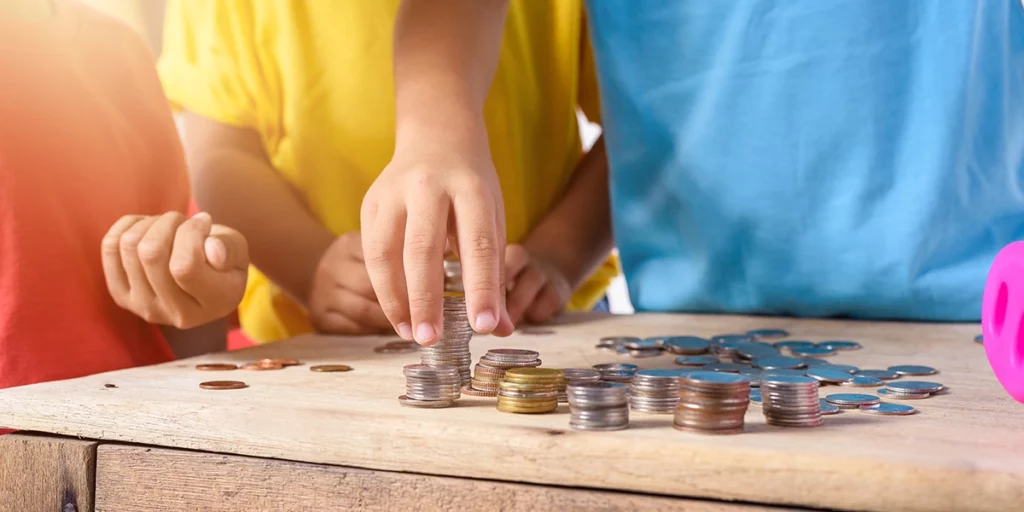Many schools use the internet every day to teach students and help them learn. They provide free WiFi to make it easier for students to access online resources. While this is helpful for education, it raises an important question for parents: Is school WiFi safe for kids? As a parent, you want to make sure your child is protected from harmful content, online bullying, or strangers who might misuse the internet. In this guide, we’ll talk about the risks of school WiFi and what steps schools take to keep it safe. We’ll also share tips on how you can help protect your child while they use the internet at school.
Download and Start Your Free Trial of the Safes Parental Control App
Is Connecting to School WiFi Safe?
Connecting to school WiFi can be safe, but it depends on the security measures the school has in place. Most schools use filters and firewalls to block harmful websites and prevent students from accessing inappropriate content. These tools also help protect students from viruses and hackers.
However, school wifi passwords are usually weak and may not be fully secured. Sometimes, students might find ways to bypass filters, or the network may not be fully protected against cyber threats. Public networks like school WiFi are also shared by many people, which increases the risk of privacy concerns and personal information being exposed if the network isn’t secure enough.
Is School WiFi Safe from Hackers?
As mentioned before, schools often use firewalls, encryption, and other security measures to protect their networks. These tools can prevent unauthorized access and keep student and teacher information private. However, no network is 100% safe, and hackers can still find ways to break in if the security isn’t strong enough.
All in all, public WiFis are not generally considered safe. No matter how strong the security measures are, hackers may still access students’ data. Therefore, as a parent, you should teach your child to avoid risky online behavior, like sharing personal information or clicking on unknown websites.

Can School WiFi See What You Search on Your Phone?
Yes, when you connect to school WiFi, the network administrators can potentially see what you search online. This is because your device uses the school’s network to access the internet, and administrators may monitor activity to ensure the WiFi is being used appropriately. Curious to see how it works? Let’s check it out.
- First, the school’s WiFi can record the websites you visit, search terms you use, and the apps you access.
- Many schools use special school internet security tools to track online activities, block certain websites, or flag inappropriate searches.
However, if you visit websites with “https” in the address, your search details are encrypted, meaning administrators can only see the website but not the exact content or terms you searched. Additionally, apps like WhatsApp or Instagram often use encryption, so specific activities within those apps might not be visible.
Can School WiFi See What You Search with VPN?
If your child uses a VPN (Virtual Private Network) on school WiFi, it becomes much harder for the school to see what they are searching or doing online. A VPN encrypts your internet traffic and hides it from others on the network, including the school’s WiFi administrators. A VPN creates a secure “tunnel” for their internet activity. This means the school WiFi can only see that they’re connected to a VPN, not the websites they visit or the content they view. Moreover, their search terms and browsing history are routed through the VPN’s servers, so they don’t appear in the school’s monitoring tools.
Are There Rules About Using VPNs in Schools?
Yes, many schools often prohibit VPNs on school WiFi networks. Schools usually block VPNs because they bypass security filters designed to protect students from harmful content or distractions like social media. Using a VPN may violate the school’s acceptable use policy, which outlines how students are allowed to use the internet.
If caught using a VPN, students could face consequences such as restricted WiFi access or disciplinary actions. It’s important for students and parents to understand the school’s internet policies and respect them to avoid issues.

Tips to Make School Internet Safe for Our Children
According to an article about cybersecurity education, it’s never too soon to teach your child about cybersecurity and online safety. As technology has become a part of their lives, it’s crucial for parents to give their little ones online safety tips. Here are some suggested tips to secure them against the risks of school WiFi.
- Ask the school about the safety measures they have in place, like content filters, firewalls, and monitoring systems, to ensure their WiFi is secure.
- Teach your child to avoid suspicious links, not to share personal information, and be cautious about what they post online.
- Install parental control apps or software on your child’s devices to monitor and manage their online activity, even when they’re using school WiFi.
- Remind your child to follow the school’s internet use rules and stay focused on educational activities during school hours.
- If needed, educate them about ethical and appropriate VPN use, but ensure it complies with the school’s policies.
- Regularly check in with your child about their online experiences at school and address any concerns or issues they may encounter.
Final Word
While schools implement measures like filters and firewalls to protect students, risks such as inappropriate content, cyberbullying, and hacking still exist. Parents need to stay informed, teach responsible internet use, and use the right tools to keep their children safe. Moreover, using a parental control tool, like the pre-built features on devices, such as Macbook parental controls, can come in handy to make sure no online danger threatens your child. Our parental control app, Safes, is designed to give parents peace of mind by offering powerful features like content filtering, activity monitoring, and app management, all in one easy-to-use app. Whether your child is connected to school WiFi or browsing at home, Safes helps you stay one step ahead in protecting them online.
Take control of your child’s online safety today. Download Safes for Android or iOS and start your free trial now!
Your Child’s Online Safety Starts Here
Every parent today needs a solution to manage screen time and keep their child safe online.
Without the right tools, digital risks and excessive screen time can impact children's well-being. Safes helps parents set healthy boundaries, monitor activity, and protect kids from online dangers—all with an easy-to-use app.
Take control of your child’s digital world. Learn more about Safes or download the app to start your free trial today!




